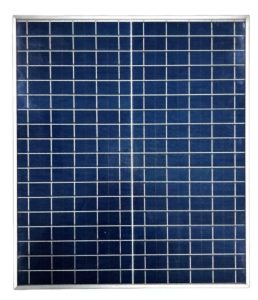
Scientists have long been thinking about the conversion of solar energy into electricity, so the first attempts date back to the early 20th century. At that time, researchers tried to implement a thermal power plant project that would transform solar energy. However, their attempts were unsuccessful. After working on the mistakes, the scientists came to the conclusion that it was necessary to use solar energy directly. This is how Alexander Becquerel’s photoelectric theory was born. However, scientists were only able to test its performance 34 years later, in 1873. This year was the year of the discovery of semiconductors, which are essential participants in the photoelectric effect. After that, the history of solar power plants began.
What is a solar panel?
A solar panel is a system of photovoltaic cells that accumulate sunlight and convert it into electricity. Depending on the type of solar panels, their appearance, power, and capabilities will differ from one another.
So, there are the following main types of solar panels:
1. Thin-film. These solar panels are made of thin layers of amorphous silicon, which are applied to a base made of foil or glass; diselenide and copper. Compared to other types of panels, these are the cheapest. However, at the same time, they are the least productive, as their efficiency is 6-13%. 2. Polycrystalline Polycrystals of silicon and some other impurities are used to make these types of solar panels. The percentage of efficiency of polycrystalline solar panels is 15-18%. At the same time, the technology of their production is simple and cheap, so their cost is lower than that of monocrystalline ones. 3. Monocrystalline Monocrystalline solar panels are made of single crystals of silicon. Their efficiency level is the highest and ranges from 17 to 25%. They can serve their users for up to 25 years. The cells of monocrystalline solar panels are easy to recognize because they have the following appearance: a square shape with cut corners of dark blue or black color. These panels are the most expensive, but also the most efficient in converting solar energy into electricity.
What do solar panels consist of?
The structure of each solar panel has similar elements, the main of which are interconnected photovoltaic cells made of a semiconductor, frame, glass, silicon wafer, encapsulant, and junction box.
How solar panels work.
Solar panels are based on semiconductors. The moment they are exposed to sunlight, they begin to heat up, absorbing half of the energy released by the sun’s rays. Photons of light knock electrons out of the general atomic structure of the semiconductor. After that, free electrons begin to form a charge. Each cell of a solar panel is not a solid silicon segment, but consists of two layers. However, this is not enough to create a full-fledged electric field, so foreign substances must be used to form a positive and negative charge. To get extra electrons with a negative charge, the top layer of silicon is saturated with phosphorus. At the same time, the lower layer is saturated with boron, which leads to a decrease in electrons, and thus the formation of a positive charge. These processes affect the creation of an electric field between the upper and lower layers. Next, a photon of sunlight knocks out a free electron, and the electric field pushes it out of the silicon junction. This is how a current is generated. The generated electric current is output to the system through removable busbars and conductive plates located on the sides. However, it should be remembered that initially a direct current is generated, but the network to which various gadgets are connected has an alternating current. Therefore, the generated electricity is sent to the controller and inverter, where the direct current is converted into alternating current.
Can I use solar panels in winter?
Solar panels generate electricity by interacting with the sun’s rays. However, there are not always sunny days, so engineers set out to find the most creative and efficient solutions to generate the maximum amount of electricity, even in winter and cloudy weather.
Low temperatures, snow, ice.
In winter, due to insufficient sunlight, the performance of solar panels is significantly reduced compared to the summer period. However, when the weather is sunny in winter, low temperatures contribute to an increase in the efficiency of electricity generation, as they reduce the resistance in the electrical components of the solar panels. Maintenance personnel heat the panels. In this way, unnecessary snow and ice are removed and the overall structure is maintained. There are a number of modern solar panels that are installed specifically at an angle that allows snow to naturally slide off, thereby maintaining access to sunlight.
Cloudy days and weak sunlight.
The productivity of electricity generation decreases but continues even in cloudy conditions. This is because solar panels are manufactured using advanced technologies that work not only from direct sunlight but also use the entire light spectrum. Thus, the use of solar panels not only contributes to the development of renewable energy and reduces the impact on the environment, but also creates a reliable backup source of energy in the event of hostile attacks, accidents, natural disasters or technical failures. And further development of technologies allows solar panels to become even more efficient.

